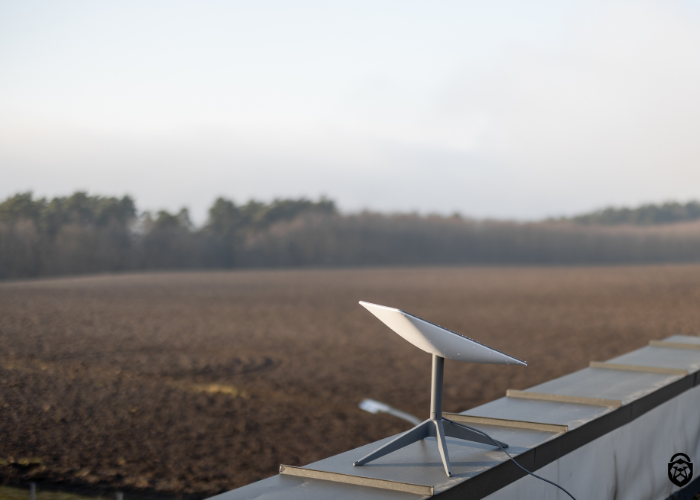As RV enthusiasts, we crave the freedom of the open road and the serenity of remote landscapes. However, staying connected while off the grid can be a challenge. Enter Starlink, SpaceX’s satellite internet service, which promises to revolutionize connectivity for travelers. Here’s everything you need to know about using Starlink on your RV.
How Easy is it to Install and Set Up Starlink on an RV?
Installing and setting up Starlink on an RV is surprisingly straightforward. The Starlink kit includes a satellite dish (affectionately known as "Dishy McFlatface"), a mounting tripod, a Wi-Fi router, and all necessary cables. Here’s a detailed breakdown of the process:
- Choose Your Mounting Option:
- Temporary Setup: If you’re planning on moving frequently, using the tripod is a convenient option. Simply place the dish on a stable surface with a clear view of the sky, free from obstructions like trees or buildings.
- Permanent Installation: For those who prefer a more fixed setup, consider mounting the dish on the roof of your RV. Several third-party mounting kits are available that cater specifically to RV roofs, ensuring stability even while driving.
- Power Up:
- Connect the dish to the router using the provided cable.
- Plug the router into a power source within your RV. The dish will automatically start its initial boot-up process and begin searching for satellites.
- App Configuration:
- Download the Starlink app on your smartphone or tablet.
- The app provides step-by-step instructions to help you find the optimal placement for the dish. It includes an augmented reality (AR) feature to check for obstructions that might interfere with the signal.
- Once positioned correctly, the app will guide you through the setup process, ensuring the dish is aligned with the satellite network.
- Connectivity:
- After the dish locks onto the satellites, you’ll gain internet access. The entire process can take as little as 15 minutes from unboxing to getting online.
How Reliable is Starlink for RVers?
Starlink offers impressive reliability, particularly for those accustomed to spotty cellular connections or unreliable campground Wi-Fi. Here are some key points on its performance:
- Speed and Latency: Starlink provides high-speed internet with download speeds typically ranging from 50 to 150 Mbps, and even up to 250 Mbps in some areas. Upload speeds are generally between 10 and 40 Mbps. Latency ranges from 20 to 40 milliseconds, which is sufficient for most online activities, including streaming and video calls.
- Consistent Service: While service interruptions can occur due to satellite transitions or obstructions, these are generally brief. The system’s reliability continues to improve as SpaceX launches more satellites and updates its software. Users have reported fewer dropouts and better overall performance compared to traditional satellite internet services.
- Adaptability: Starlink is particularly adept at maintaining service in varied locations, from bustling urban environments to the most secluded rural areas. This adaptability makes it a preferred choice for RVers who frequently change their location.
Can I Use Starlink While Traveling in My RV?
Starlink for RVs, known as "Starlink Roam," is specifically designed for mobility, allowing you to maintain a connection even when you’re on the move. Here are some insights into its functionality:
- Stationary Use: Initially, Starlink required the dish to be stationary. This meant you had to set up camp before connecting to the internet. The system has since evolved, with recent updates introducing the capability to use Starlink while in motion. However, this feature is still in beta testing and may not be flawless.
- Mobility and Portability: The dish is portable and can be set up at new locations with minimal effort. This makes it perfect for RVers who frequently move from one campsite to another. Simply pack up the dish, set it up at your next destination, and you’re back online within minutes.
- Real-Time Adjustments: While in motion, Starlink’s ability to track and maintain satellite connections is being refined. Although currently in beta, this feature shows promise for those who need constant connectivity while driving.
What are the Coverage Areas for Starlink in Remote or Rural Locations?
One of Starlink's most significant advantages is its coverage in remote and rural areas where traditional internet services are lacking. The satellite network covers vast swaths of the globe, with particular emphasis on underserved regions.
- Current Coverage: As of now, Starlink is available across North America, Europe, and parts of Australia and New Zealand. SpaceX continues to expand its satellite constellation, with plans to cover most of the globe by the end of 2024. This expansion is particularly beneficial for RVers exploring less populated areas.
- Remote Accessibility: Whether you're in the mountains, desert, or deep in the woods, Starlink can provide a reliable internet connection. This makes it a game-changer for remote workers, digital nomads, and anyone who values internet access while off the grid. Unlike traditional services that rely on ground-based infrastructure, Starlink’s satellite system can reach places where laying cables is impractical or impossible.
Is Starlink Affected by Weather Conditions?
Weather can impact Starlink's performance, but the system is designed to handle most conditions. Here’s how different weather conditions might affect your connection:
- Rain and Snow: Heavy rain or snow can reduce signal strength, potentially causing temporary slowdowns or outages. However, the dish is equipped with self-heating technology to melt snow and maintain functionality. Users in snowy regions report that the dish effectively prevents accumulation and maintains service even during winter storms.
- Wind: High winds do not typically affect the dish’s performance, provided it is securely mounted. For RVers, ensuring the dish is stable and using a robust mounting solution is crucial, especially in windy environments.
- Clouds and Fog: Light clouds and fog have minimal impact on Starlink’s signal. Severe weather conditions like thunderstorms might cause brief interruptions, but these are generally short-lived. Starlink’s constant adjustments and a growing network of satellites help mitigate these effects.
Starlink is proving to be a revolutionary solution for RVers seeking reliable internet access on the road. With easy installation, expanding coverage, and the ability to stay connected even in the most remote locations, it addresses many challenges RVers face. While weather conditions can occasionally affect service, the benefits far outweigh these minor inconveniences. For those who live life on the go, Starlink offers a promising path to staying connected with the world, no matter where your adventures take you.
Whether you're a digital nomad working remotely, a family wanting to stay connected, or a retiree enjoying the freedom of the road, Starlink can enhance your RVing experience by ensuring you’re always one click away from the world. If you want to see additional ways to connect on the road checkout our blog post on WiFi Options While RVing.
See you on the road!






Share:
Medical Care and Health Care While RVing
5 Essential Items for Your RV Maintenance Kit and Why You Need Them
4 comments
What plan for RV, not in motion, but is used in mutiple campsites.
Thanks
Barry
The cost of starlink equipment is about $600. Monthly fee for me is $150; $120 for fixed residential and $30 for Starlink Mini 50GB. I use the mini for RV’ing, it’s awesome.
I have had a Starlink for over a year. It was great last year on a TRip to Alaska!. Currently we pay $150 a month. It is month to month so cancel when not using it. They also send a notice so you won’t forget the subscription is running.
I have not had issues even during storms. Most interference issues seem to be from trees!. Always seems to need a clear shot to the north.
You left out one very important point, what does it typically cost for equipment and monthly service?